So this week was a busy one, during which I got to lay out all of our X-MEN plans for the whole of Marvel. And despite my usual stumbling, bumbling delivery, it all seemed to go over well. Perhaps my favorite comment was when I was asked how long we’d been working on all of this stuff, and I told the questioner “since August”. And if nothing else, they were impressed with the sheer amount of concepts and material that had been generated in that time. But that’s the world of comic books for you: we move nimbly from idea to execution, far swifter than is possible in the worlds of merchandise, consumer products, television, film or animation.
I also spent a small portion of this week working out the dedicated X-Family Bullpen Bulletins-style page that we’ll be running once we hit the ground. And we got in the colors on a couple of our initial covers for our launch titles, as we’ve started to pull together materials for the Previews catalog. I have to say, doing initial mock-ups, once you put that X-MEN logo on there, sonuvagun if it doesn’t become X-MEN for real somehow.
I’ve had folks scratching around hoping to pick up some inside information for a while now, and everybody’s going to begin to see this stuff very soon (sooner than I’d like given that I wish we were deeper into production on everything.) So the whole endeavor is starting to feel more real. We’re in a bit of a lull period, when everybody in the group is a little bit off-balance in that we’re sending fewer and fewer books to print each week, those former responsibilities handed off to our successors on those series. I’ve already read two finished issues of VENGEANCE OF THE MOON KNIGHT that I had absolutely nothing to do with, and several AVENGERS scripts as well. Weirdly, that part doesn’t bug me at all. I feel like I was able to let go and disengage without any problem.
But this week was the tipping point. Before now, this was all theoretical. Today, we’re in the X-MEN business for real.
See you soon.
Lots of questions this week—our big centennial release brought well-wishers out in force, so thanks for all of the support and interest. Here’s what you had to say this week:
Jimmy Benito
I'm looking forward to Blood Hunt and I was excited to learn about the various connected one-shots especially the ones featuring X-Women Jubilee, Wolverine, Psylocke, and Magik. Would you be able to share if these four are being edited out of the Avengers office under your direction, the current X-office or your upcoming X-office?
We are overseeing those four one-shots, Jimmy, and actively editing three of them: Annalise Bissa is doing JUBILEE, Darren Shan is taking care of MAGIK, and Mark Basso is on LAURA KINNEY, THE WOLVERINE ( I almost said “on top of”, which created a different image that I was intending!) The fourth one, PSYLOCKE, was already in the editorial hands of Lindsey Cohick, and it didn’t seem right to be to pull it away from her, so she’s still doing that one under my oversight. These books all exist in s a sort of “no man’s land” state, in that they’re neither Krakoa-era releases nor legitimately part of our initial release set-up. But because they’re largely in our hands, they won’t be disposable or throw-away, we’ll take the opportunity where possible to seed some ideas and elements for the stuff that is to come.
Andrew
On the point about the reality of authors/artists, there is an artist whose work in a collected edition I discovered about two years ago and LOVED.... and then I found out that his political views were just shy of total bash*t crazy. I go through a tug of war every time I see the book on the shelf - I want to keep it bc I love everything about it.... but seeing That Name causes me to shake my head and want to donate it to charity. Maybe the lesson is -- it's better not to know what an author's or artist's personal views are on anything other than what they put on the page. Having said that, it IS an interesting phenomenon to have grown up reading various authors' works only to encounter them on social media and see the reality of who they are. In some cases, sure they disappoint, but I think I've found more often than not, that I am re-impressed with who they are as actual people.
I completely get that, Andrew. And I think it’s a personal decision as to whether you can overlook the views of the creator when reading the work that they’ve done. Speaking for myself, as I’ve spoken about in the past, I’ve found that I cannot watch I SPY any longer, despite it being a favorite series of mine. But Bill Cosby’s actions have made it impossible to look at him in the role of Alexander Scott in a neutral way. Similarly, I’ve been enjoying my rewatch of THE SHIELD quite a bit, except for one element: Michael Jace, who played Julian Lowe on the show, was later convicted of killing his wife, and so that information colors every scene that he is in. It isn’t ruining the experience for me completely, but it is having an effect on how I feel about his plotlines on the series. I can’t work up any sympathy for his character. So if this is an instance where the knowledge of the person taints the work too much for you, you’re entirely within bounds to choose to not go back to that work, and to excise it from your library. On the opposite hand, if you can still enjoy the work regardless of your differences with the creator, that’s perfectly fine, too. It’s up to you to decide for yourself.
Jess Nevins
RE: Grosse Point Blank: the scene with the baby is an all-timer mix of soundtrack and story.
Re: 1980s runs: Roger Stern's long run on Dr. Strange is unjustly forgotten now, but I think it's great.
Agree with you completely about that scene, Jess. And for those who may not be familiar with it, you can check out this moment here. Also, in the wake of last week’s piece on the film, I learned that Associate Editor Annalise Bissa attended the high school depicted in GROSSE POINTE BLANK (the actual Detroit building that we see; all of the interiors were filmed elsewhere.) Wild.
JV
In regards to your comment on Grosse Pointe Blank not needing a sequel - any comic book work you feel that way about? A classic done in one that we don't need to follow up on?
Watchmen is a go to answer of course - I am torn as I love the original (along with it's ambiguous ending) but I also kinda like seeing them interact with the DCU. In my head cannon I see the original 12 issue mini on its own DC Earth and the other one being from a divergent earth in the multiverse. Same with New Gods - Earth Kirby where the story stood alone and ended and then New Gods of Earth 2 interacts with the DCU. yes its geeky and neurotic but it all works in my head and allows me to enjoy it all :)
WATCHMEN is certainly the quintessential example, JV, but I’d sort of lump SANDMAN in there as well. There’ve been some nice (and profitable) spin-off projects of both, but I think they exist better as singular works. I don’t mind when Neil Gaiman occasionally pops back in to do another tale set in that world, but I don’t really need everybody else’s around-the-edges contributions. But when you’re talking about projects that were created as part of the Marvel or DC Universes, those were designed from the jump to exist in a shared sandbox, so they don’t follow the same set of circumstances. (And for what it’s worth, in my head canon, it’s impossible to get from the world of WATCHMEN to the DC Universe because the latter is fictional in it, to say nothing of never having truly been established. But other people see things differently.) I can argue that projects such as ETERNALS were better off before they were shoe-horned into the shared continuity of the Marvel Universe, but that this point, what’s done is long since done, so there’s no real going back.
Evan “Cool Guy”
I saw an interview with Christopher Priest on the Comic Tropes/Pros and Cons Youtube channel recently where he said that the job of "Editor" would be more accurately titled something like "Producer," as actually editing the comics is not nearly as important to the role as putting together the creative team and other various responsibilities. I thought that seemed accurate but no one would know better than you! Your thoughts?
I think Priest is a very smart, very insightful creator, Evan, so there is some truth in what he’s saying here. By that same token, he hasn’t worked this side of the desk in many decades at this point, and so I also think he’s describing the elephant by feeling only its trunk a little bit. Surely the ability to cast a particular series is important, and doing so correctly is the most important part of the job. But the ability to deconstruct a story and improve it, to analyze artwork and visual storytelling and improve it, to get the best work out of your creators and throw them solutions to their storytelling problems is also mission critical. If you can’t edit the actual book effectively, then you can’t do this job professionally, end-stop.
Peter Hohman
what would your ideal method of editorial assignments be? Any "imprint" that you would want to set up at Marvel but the stars have never quite aligned?
I don’t know that I really have a good answer to this, Peter. I’ve worked on just about every character and series that Marvel has over my many years, as well as crossover projects with a bevy of DC and other characters as well. I’ve even done just a tiny taste of STAR WARS and CONAN and MIRACLEMAN in places such as MARVEL COMICS #1000. So I’ve kinda done it all, and there isn’t some remaining white whale imprint out there waiting for me to someday get around to it. I’ve edited FANTASTIC FOUR and AVENGERS longer by far than any other human being alive or dead, and I was just handed X-MEN. So I’m good.
Curtis King
Now, am I nuts or has Ross purposely designed the “4” to look like a stylized “F” when the emblem is turned 90°?! After I saw the cover of this week’s GIANT-SIZE FANTASTIC FOUR #1 in today’s blog, I realized that I just HAD to ask!
I think this is a question that only Alex could answer for certain, Curtis, but it’s definitely within the realm of possibility, as he does that sort of thing with some regularity, largely for his own edification.
Callie
So, I have two question about your upcoming X-Men takeover - With the new X-Men 97 show coming out, a lot of mainstream attention has been put on the x-men, and all the usual suspects are making their rounds, accusing it of being wOkE garbage before it's even released, and it's prompted a lot of conversation about the role that progressivism and so called 'wOkEnEsS' does and should play in the X-Men. Do you believe that the X-Men and their comics should be taking a stand and making a statement on current issues minorities face, in spirit with their history and origins? I personally feel like that's a very important thing to keep, as nearly all of the X-Men's best stories were made through that lens, such as God Loves, Man Kills, Days of Future Past, the original sentinel sagas, and even a lot of the stuff in the Krakoan era.
And second question, also somewhat related to X-Men 97 - There have been a lot of signs in the recent X-Men comics that many characters who have had dramatic character and status quo shifts in recent years may be getting reverted back to older, less developed versions of themselves. The two biggest examples are Beast, who clearly is being geared up for the younger clone from X-Force #48 to become the main version, and Magneto who, while earlier in the process, definitely seems to be in danger of being reverted to an earlier version of himself, which would be highly disappointing considering his growth and heartwrenching death in X-Men Red and the Krakoan era as whole.
So, my question is, is this something you want? Is this even something you're aware of or involved in? If not, can you speak to whether this has to do with Disney/higher ups at marvel wanting these characters to be in their most recognizable iterations for when the X-Men make their MCU debut, either in X-Men 97 or whatever the MCU X-Men movies end up being? Is your upcoming relaunch set to capitalize or emphasize that these characters are much more in line with their earlier versions of themselves?
Long question, Callie, and one that I’m only going to be able to give you a so-so answer to given that while we’re getting closer to the day, I’m still not entirely ready to speak about the new X-Books just yet. But let me try to give you something here.
First off, I think the ill-defined accusation of being “woke” is nonsense, and I tend to turn off and tune out whenever it comes up in almost any context. The people who are using it, and who brandish it like a sword to attack whatever they don’t like, tend to be mostly, well, cretins. They aren’t making a good faith argument, they’ve just come up with an all-purpose term, an infinitely adaptable scarlet letter that they can hang on anything they don’t like for any reason. That all laid out, I’ll tell you what I said previously on social media when a version of this question came up: for X-MEN, the message is the concept. This is a book about oppressed outsiders, each a minority of one for all that they share the X-gene and a commonality of purpose, who are hated and feared because they are different and who have to constantly struggle to find acceptance within a society that does not understand them and wishes that they would just go away. Every X-MEN comic book published since 1963 would is about these themes to one degree or another. Without them, it wouldn’t be X-MEN. So while our primary objective is always going to be to entertain and to thrill, this is always going to be a prevalent stratum in every X-MEN story.
Your second question is more difficult to respond to as I don’t yet want to give anything away. And I’m sure that different people will see things different ways. The one thing I can promise you is that everything is going to change. Some of those changes you will like and others you will not. That’s the way it goes. Some may seem regressive to some people while they feel like a return to the essence of certain characters for others. And some people will be unhappy at the elements of development from the past five years that stay in place, or that move forward in unexpected ways. This is the Marvel Universe, and every story is built upon the foundation of all of the stories that came before it. Everything can’t stay the same forever, but neither can it simply revert back to 1992 or 1980 or whenever as though the intervening time never happened.
And to be clear, nobody at Disney has said word one to me about wanting or needing the X-Men to be presented in any particular way. As I related at the top, most of those people were utterly unaware of what our plans were until this past week, when I walked them through everything. I know that people love to pin the blame on gigantic faceless corporations, but if you wind up hating everything that we do, that’s going to come down the the choices that I and my team and my creators made and will make, not some evil edict from secret, shadowy bad guys. It will be this way because we made it this way, no other reason.
Martin Scherer
Hearing about your missing Fantastic Four issues reminded me of the blog series you did on Marvel.com about running a trading group to get a copy of FF #1 (Maybe it was a different early issue)? This would have been around 2007? Can you share that story?
Sure, Martin. Back between 2007 and 2010, I was writing a regular blog for Marvel.com, posting stuff several times a week. It was by far the most prolific blog that the site had, and consequently it ate up material sort of the way that this Newsletter does. So there was always a need for new things to write about.
My old assistant Gregg Schigiel had turned my on to the work of British comedian Danny Wallace and from there I discovered the work of his one-time roommate Dave Gorman. A lot of the material they would produce would be drawn from attempting to carry out challenges in real life. Wallace, for example, wrote the book YES MAN (which was made into a middling movie later on starring Jim Carrey) chronicling a month’s worth of time during which he said yes to any question or proposition put to him, and the adventures he had consequently. This sort of real life challenge appealed to me. I had also heard about a website on which some person had started with a paperclip and through trading, eventually wound up owning a house. So inspired by these two things, I decided to see if I could take five random comic books from my junk display spinner rack and parlay them through trading to a copy of FANTASTIC FOUR #1.
As part of the process, I made up a “Certificate of Meaninglessness”, my satire on the Certificates of Authenticity that were then being heavily promoted. It always seemed to me that if somebody wanted to counterfeit a classic comic book, it would be super easy for them to counterfeit some certificate, so the whole idea was a sham. Consequently, my certificate wore its meaninglessness as a badge of honor. Each participant got one outlining what they had traded for what.
Very early on, I decided that the end result of this endeavor ought to be charitable, so I arranged with Jim McLauchlin at the Hero Initiative (which you should visit right this moment and give a dollar or two to) to donate the FANTASTIC FOUR #1 plus anything else that was left over at the end of the game to HERO so that they could auction it off and generate some income. Jim at a certain point roped in Stan Lee’s involvement, and Stan generously donated a small stack of books from his personal stash, all of which were signed by him.
The whole thing was a great experience, especially the manner in which all of the fans who became involved were way more generous than they needed to be, recognizing that this was for a good cause. I mean, we got great material flowing through the doors regularly, including INCREDIBLE HULK #2 and #4, AMAZING SPIDER-MAN #5, a Golden Age issue of SUB-MARINER COMICS #6, plus some original art (Mike Perkins donated a wonderful drawing of Captain America) and we also got a Bowen mini-bust of Cyclops along the way. In particular, a Tradee by the name of Jef Price donated items to the effort regularly, asking for nothing in return. And we did wind up getting the FANTASTIC FOUR #1 seen above, from a Tradee named Eric Sellers. The entire process took about three months all told. And the Hero Initiative made a couple thousand dollars on the sale of it and the rest of what I had in stock once it had been acquired, so hopefully that cash did some good for some comic book creator who was down on his luck.
For those who are interested in reading about this further, I archived a number of the original posts over at my current blog. This link is for the launch of the event and the first couple of trades, this one details Stan Lee’s involvement and lists the items he donated, and this one is where we announced our victory. I also recorded an episode of the Spec Tales podcast in which we talked about this Take My Trade event, which can be listened to at this link.
Marc Guggenheim
I believe I got the bit about Bill's initial intention for Carrion to be the remains of the ill-fated Peter Parker Clone from something Tony Isabella wrote for Comics Buyers Guide waaaay back in the day:
"In Mantlo's original plans for this story, Carrion would have been revealed as that Peter Parker clone, transformed by his brief time in the furnace and his basically unstable molecular structure. Warren's cloning process wasn't as good as said mad professor had thought. That the real Spidey had also dumped the then-deceased Green Goblin's gear in the same furnace explained the Goblin-esque look of Carrion." (http://www.worldfamouscomics.com/tony/back20010105.shtml)
I leave it to you and Tony to fight this one out!
Thanks, Marc! Tony was there, so I’d give credence to his recollections. I still can’t really imagine anybody objecting to the Parker clone being brought back as Carrion, whereas it’s more credible to me that there would have been an objection to Norman Osborn being resurrected in this fashion. But that’s what makes horse races, and I’m happy to accept Tony’s version as the more accurate one.
Purdin
You mentioned Amazing Heroes! I have been wondering what comic magazines you picked up over the years as a fan and then a pro? Any stand-out fanzines? Combo? Comic Scene? Comics Journal? Just curious what your go-tos were.
Well, Rickey, I was from an era before WIZARD was a thing, let alone its many competitors in that space. The first fanzine I can recall seeing was called MEET THE DEALERS, and it was a tabloid newspaper similar to the COMICS BUYERS GUIDE. Throughout the 1980s, I would read AMAZING HEROES regularly. There was a little candy store right near campus at the University of Delaware that didn’t carry any comics but which did carry AMAZING HEROES back during the time it was coming out every two weeks. So I’d routinely buy a copy while waiting in between classes. I also often bought COMICS INTERVIEW depending on which creators were featured. And I loved the long interviews the COMICS JOURNAL would then do, though the rest of the magazine often left me cold with its quasi-elitist viewpoint on the field. Once I got started at Marvel, I wound up subscribing to the BUYER’S GUIDE, and past a certain point we’d get complimentary copies of WIZARD and HERO ILLUSTRATED. And I was a big fan of Gary Carter’s magazine COMIC BOOK MARKETPLACE in the late 1990s/early 2000s. Plus pretty much everything that John Morrow at TwoMorrows has put out (excepting their Lego magazines, as I don’t really have any interest in the subject.) I’ve been reading THE JACK KIRBY COLLECTOR since the very first small-run issue.
Jeff Ryan
what do you recommend as a starting point for a Marvel movie fan who's never read "real" comics but wants to give it a shot?
This is such a frequent question, Jeff, but a complicated one as well. And the answer depends on what you think that fan would be interested in based on what films they’ve liked. In general, we still try to make our books inviting on an issue-by-issue basis, so any contemporary release ought to be all right as a first impression. But of course, these days most newcomers are more comfortable with collected editions. The one thing I’d say in this regard would be to go slow. If you drop an Omnibus onto a newbie, or even an Epic Collection, they’re likely to be daunted by the sheer number of pages and avoid cracking it. So I would recommend any regular volume one trade paperback featuring the character(s) in question. If they like that, it’s easy enough to get them volume two and go on from there. But the barrier to entry isn’t so huge.
Daniel C Parmenter
Is that "pinhead" drawing in the pitch pamphlet obliquely referring to Griffy's Zippy or is it just one of those weird coincidences? ("Hidden Significance" indeed!)
I couldn’t say for certain, Dan, but knowing Rick Parker, it’s likely that he was familiar with Zippy, so probably.
Andy T
Personally, I'd be more invested in reading digitally if I could feel more ownership over the digital comic itself. To that end, do you see ANY movement in the industry toward a built-for-purpose device - a dedicated comics reader - like an "iPod for comics" with software to manage digital issues on the device from a library of your purchased comics on a cloud? With the ubiquity of tablets and phones...probably not? Again, I'm coming at this with zero experience with Comixology or reading digital comics from other publishers.
As you’d expect, Andy, if there was anything to be announced in this area, this Newsletter would hardly be the place where we’d be announcing it. I will say that the question of ownership of all digital media is a dicey thing, as we’ve seen evidenced time and again as shows and books and films have disappeared from purchaser’s libraries when agreements ran out, and so forth. I don’t know that you can ever truly say you own it if you don’t somehow have it tangibly.
Terry
I've seen it on Twitter and several other sites that the origin of Magneto's helmet blocking psychic attacks is a creation of the X-Men movie from 1999 and not something from the comics. I can't say that I'm well versed enough to find an issue that outright disproves that. But the Magneto entry for the Marvel Handbook Master Edition does say that his helmet can block psychic attacks. And that was published well before 1999. Is this something likely just thrown in there to fill space or do we know if there's any comic where this is shown?
I don’t know about thrown in there to fill space, Terry, but Mark Gruenwald and his team would regularly extrapolate information in their Handbook entries that hadn’t been established anywhere in the books themselves, so this may have been one of those. I haven’t done any research, but my guess if it was something that originated in the comics is that it might have been in UNCANNY X-MEN #149-150. But I don’t recall that being the case. Either way, even if it wasn’t an idea totally originated by the first X-MEN film, that was certainly where it became an essential property of that headgear that later got reflected in the books as well.
Behind the Curtain
.Back when he left staff in 1999, my Assistant Gregg Schigiel (now permanently enshrined as Greatest Assistant Gregg Schigiel after he sent my a bin of Fresh-From-The Factory Reese’s peanut butter cups, unbidden, years after he was in my employ) wrote up the following “Owner’s Manual” to pass along to his successor in the position. So this is a good snapshot of what being an Assistant Editor at the turn of the millennium looked like:
For the person who occupies the blue chair...
In an effort to ensure the smoothest transition, here's sort of an "owner's manual" to being an assistant in this office. Now, none of these are hard and fast rules, but the intention is to give you the lay of the land as it currently exists. I would suspect this would change to better serve the new set-up here, so don't worry, I won't be offended.
RESPONSIBILITIES; wherein I break down what is done and by whom.
Every editorial office here at Marvel is different, but as far as this office goes, there are some responsibilities that are predominantly yours.
First and foremost, you do whatever Tom doesn't want to do. He'll ask you to make calls, check on stuff, etc, etc. In many ways, in this regard, you're also a runner. As things were with me, I was sort of a liaison between office stuff and other departments, be they production, manufacturing, accounting, etc.
In my day, I tended to deal with art related concerns more. I called artists, inkers, etc. I dealt with cover sketches. I worked with the bullpen on setting up covers, art corrections, etc. Depending on your strengths and weaknesses, there may be a different breakdown (i.e. - if your strength is in organization and stuff, you may end up dealing more with schedules and such).
Play it by ear. Before too long you'll get a sense of what your responsibilities are. Early on, listen to Tom. He knows this stuff REALLY well. You listen, you'll learn...a lot.
Second, you're the intern when there's no intern to be found. You'll be doing all the copying, FedExing, faxing, running of covers and indicias, etc, etc.
Third, you are the intern's direct supervisor. You train 'em, you deal with 'em. If Tom has a problem with the intern, he'll most likely tell you about it. That means you tell the intern about it.
In the end though, you're Tom's assistant, and he'll teach you everything you need to know. He'll coach on calls early on, etc, etc, until you get your footing. You're gonna learn a lot. Just take it all in.
THE OTHER DEPARTMENTS
As I mentioned above, you'll be the runner, the guy that deals with people in the building about a lot of different stuff. In my experience, I've learned some things that'll come in handy.
Production -- The Bullpen is a unique entity, as you probably already know (since in most cases you were once an intern). They can be intimidating, stand-offish, whatever. But, in the end, they're a good group of people who are easy and fun to work with..
I've had a very good working relationship with production, and as far as I'm concerned it comes from just being on the level. We all work together, so it might as well be worthwhile, and hell, a little fun. It's important to pay attention to what they do, it'll help in a lot of ways.
Any problems, concerns, issues, generally Dan Carr's the guy to go to. Other folks who get stuff done and know their shit are Paul Tutrone, Chris Giarrusso, and Tim Smith. Any issues with covers, needing archives, etc, go to Johnny Greene.
Manufacturing -- Manufacturing, as you probably know by now, is our liaison with the printers and color separators.
Again, pay attention to what they do and how things work. Any problems, concerns, issues, go to Christine. She's the WO-man down there.
Accounting -- When a freelancer calls about a voucher, or vouchers need to be dropped off, this is where you go. Margaret is the go-to person here. She's a very helpful, good person. BUT, you gotta work with her. When she calls you with a question, get back to her, don't leave them hanging. Trust me, in the end, it the right thing to do and will be very beneficial to the workings between this office and accounting (which then affects freelancer relations, etc, etc.)
Sales/Promotion -- Alright, you've got Bill Rosemann, Matt Ragone and Juan Collado. Bill does catalog stuff and promotions. He's fine, you give him art and he puts it in the catalog. He works with Jeff Suter who does designy stuff.
Matt and Juan, whatever. Just know that Juan signs covers for direct/newsstand. I really have very little to do with this department, both by nature of the job and by choice.
Online -- Downstairs, on 9, are Gregg Sanderson and the online crew. They organize chats, promote stuff online, etc. They from time to time will come up and ask for art and stuff. Usually we ask what it's for, so as to not blow stories, etc, etc. But by now they know Tom's system pretty well, so they're equally careful.
Mailroom -- Brian, Charles, and John Galvin. Good people, can be helpful. Charles is the guy I generally go to for anything. Then Brian. Then, if you REALLY need to, John.
If you EVER see Charles or one of the guys come up for FedEx, HELP THEM OUT! Otherwise, I'll come and personally kick your ass.
Creative Services -- Mike Thomas and the gang. These guys work on all licensed stuff. They'll ask for art and material for t-shirts and what have you. Help 'em out, and again, much like with online, just make sure it's all copacetic.
There you go, all the departments.
Pimp My Wednesday
While we’re transitioning into being an X-MEN shop, we’re not entirely finished with Earth’s Mightiest Heroes just yet.
Despite what the credits and the call-out indicate on this early mock-up cover, this issue of AVENGERS is by artist Ivan Fiorelli rather than regular penciler C.F. Villa, and it’s not a part of the now-concluded Twilight Dreaming storyline. Rather, it’s a done-in-one breather issue, which features some of the character interplay that many readers have been asking for more of. It also features the long-awaited return of Edwin Jarvis to these pages. Jed MacKay is at the writing helm.
And Not-Quite-Greatest-But-He’s-Up-There Assistant Editor Martin Biro put together this issue of GIANT-SIZE SPIDER-GWEN. The credits on this mock-up are wrong, too, the issue was written by Melissa Flores and drawn by Alba Glez, and it follows up on story threads from the current SPIDER-GWEN SMASH project. Plus it contains a connected classic reprint as well as the new lead story. I don’t know how the readers of today feel about this format, but having grown up on comics that did this all the time, it’s a very comfortable format to me.
And things are in the home stretch in AVENGERS UNITED #22 on MARVEL UNLIMITED, as Derek Landy is joined by Davide Tinto for this chapter in the ongoing saga of a far-off galactic conflict. All 21 previous chapters are still available to read as well, so you can pretty much binge through the whole thing in a matter of hours if you so choose.
Four Comic Books On Sale 60 Years Ago Today, March 3, 1964
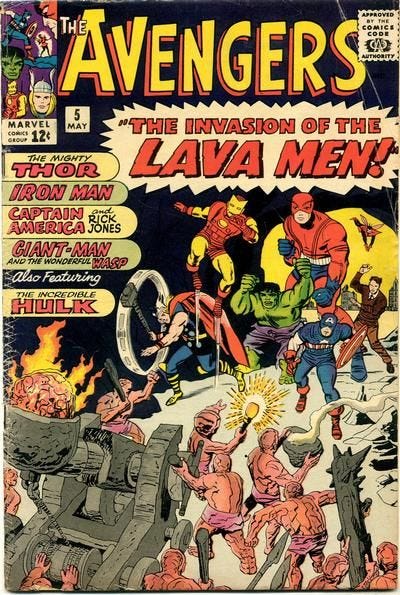
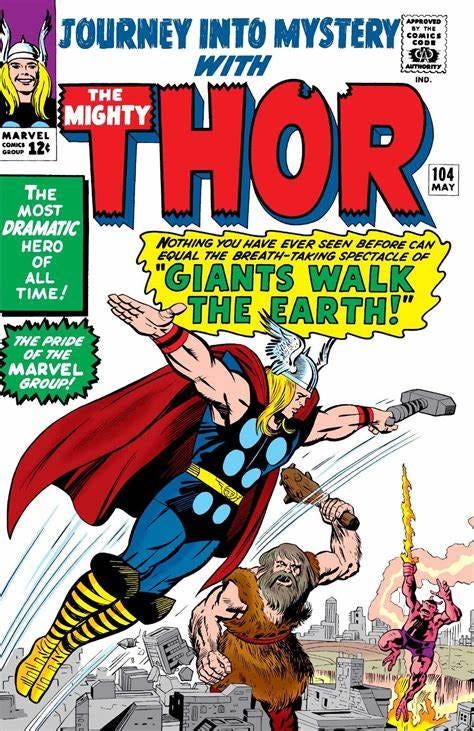
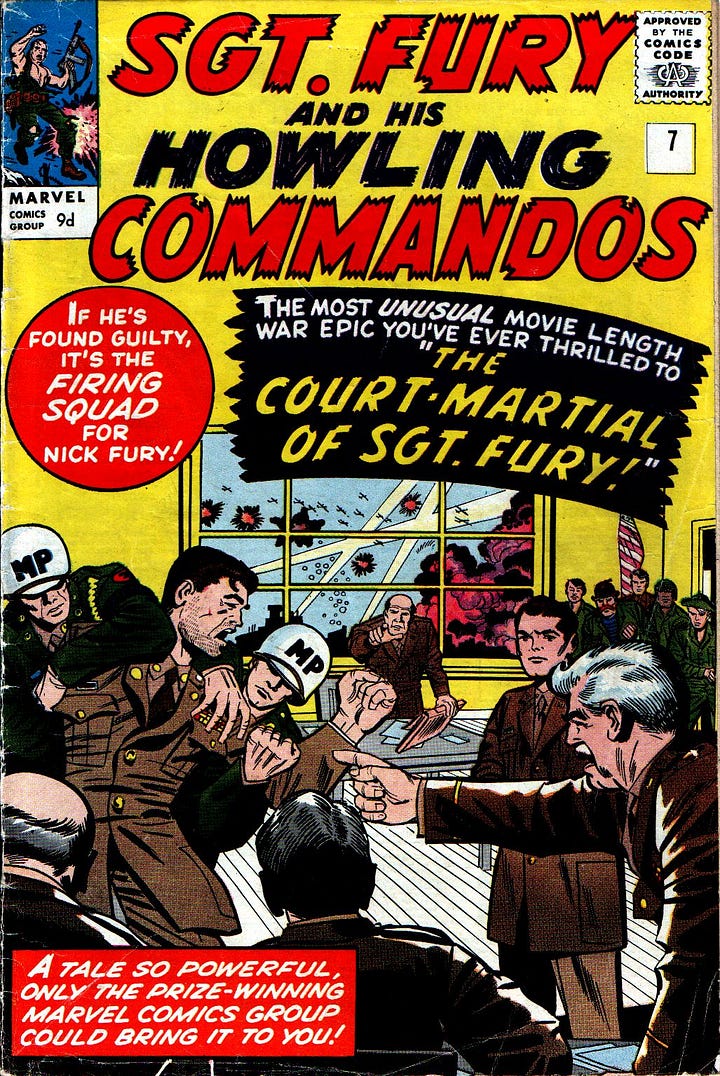

I’m pointing out the four titles above not because anything so wildly significant happened in any of them (though they were all entertaining reads) but because all four of them were plotted and illustrated by Jack Kirby and they all came out on this same day. That’s something like 88 pages of material right there, plus covers, and while Kirby didn’t necessarily do it all in the course of a month—the books that saw print at the same time weren’t necessarily done in the sequence they came out in—it’s still a staggering output for one person. And that’s not all, Jack also did covers for a couple of other books this week, and did some additional issues this month. It’s a breakneck pace, and one that it’s difficult to imagine any other artist equaling, particularly at the high quality level that Kirby was hitting. Jack was working in a stripped down style at this point, needing to turn out completed pages in such quantity. So the artwork is never quite as polished as it would soon become. In another 18 months or so, Stan Lee would arrange to pay Kirby just a little bit more money, and consequently Jack could afford to slow down just a tiny bit, he was still routinely turning out 50-60 pages a month, but he could afford to take a bit more time on each one. This is where the full flourishing of Jack’s imagination as an artist really hit full bloom, and the Marvel line became more sophisticated, more electrifying, and more kinetic. But putting out four comic books in a single day: that’s incredible.
A Comic Book On Sale 25 Years Ago Today, March 3, 1999
Perhaps the only other artist in living memory who might have been able to challenge Kirby’s speed and prodigiousness was John Byrne, although he had slowed down his output a bit by the time of 1999’s SPIDER-MAN CHAPTER ONE series. This one was a little bit of a misfire for John, though. His artwork was always admired, but over the years, he had come to think of himself as a “fix-it man”, correcting the mistakes made by other less talented creators. SPIDER-MAN CHAPTER ONE was intended to be an updated retelling of the earliest adventures of the web-slinger, and John’s take was steeped in a love for those early Stan Lee and Steve Ditko tales. However, that love didn’t stop him from making what often seemed to be arbitrary changes in the material. Some were visual, such as giving the Vulture a costume that more resembled an undertaker than a bird of prey. Some were canonical, such as when he revealed that the Sandman was a distant cousin of Norman Osborn, based almost completely on the notion that Steve Ditko had drawn their distinctive hair similarly. But the big change was made right off the bat: not only did John combine the origins of Spider-Man and Doctor Octopus into the same explosion, but he also wound up altering the reason why that Burglar showed up at the Parker household that evening and killed Uncle Ben—missing the whole point of the original story that this was a random event that could not have been predicted by Peter when he let the criminal escape earlier. So it was a mixed bag, and was divisive among fans of the period. Once John had left AMAZING SPIDER-MAN, pretty much all of the changes that he’d made were quietly discarded, and everything reverted back to the Lee/Ditko original conceptions. only a year or two later, ULTIMATE SPIDER-MAN was announced, and everybody in fandom moaned, expecting it to be another CHAPTER ONE. ULTIMATE SPIDER-MAN was more sweeping in its changes, but it was also better written and far more contemporary, and it became both a huge hit and a critical darling. As always, with so many things, it comes down to execution. This #0 issue was released partway into the run of the 12-issue SPIDER-MAN CHAPTER ONE series, almost like an Annual. And it explored the origins of three of Spidey’s enemies that had to be left out of the retellings of the wall-crawler’s earlier first battles with them, the Lizard, the Vulture and the Sandman.
A Comic I Worked On That Came Out On This Date
CAPTAIN AMERICA AND THE FALCON was released on March 3, 2004 and was the first Captain America series that I ever worked on. At the time, after Marvel President Bill Jemas had gone on a bit of a spree cancelling projects that he didn’t like, there was a prevalent need to ramp up production in order to maintain our overhead costs. Accordingly, even though the regular CAPTAIN AMERICA series was still coming out under the Marvel Knights imprint, I was asked to start up a second Cap book that would take place more squarely in the mainstream Marvel U. The book was written by Christopher Priest, then coming off his long and successful BLACK PANTHER run, where we’d collaborated for a time. I assured Priest when he signed on that this book was going to be the Cap series of the MU proper—but events would transpire that would wind up making that untrue. On the art side, Bart Sears illustrated the opening four issues. Bart was a popular artist at the time, and he was coming off of a multi-year stint at CrossGen, which had just gone out of business. Joe Quesada was very enthusiastic about sweeping up as much CrossGen talent as Marvel could, and Bart was no exception. Unfortunately, the pairing of Priest and Sears wasn’t harmonious. Bart had made his mark doing big visuals and impactful images, whereas Priest tended to like doing stories that were intricately plotted, with flash-forwards and flashbacks and all sorts of business. So the two were not pulling in the same direction, and consequently, while the book looked good if you flipped through it, it didn’t really read well—the storytelling just wasn’t there. What’s more, neither creator was happy, and so Bart decided to move on to other assignments after four issues, which included a BLADE series and some AMAZING SPIDER-MAN work. In his place came Joe Bennett, who was more simpatico with Priest’s approach. So now, everything was good, right? Wrong! It turned out that this was the moment when AVENGERS DISASSEMBLED was conceived. And not only would this project completely tear down and reconstruct the Avengers as the New Avengers, but the powers-that-be wanted it to be a crossover among the various Marvel Heroes titles—even though the story didn’t really lend itself to that. We managed as best we could, but certain tie-ins, such as in FANTASTIC FOUR and SENSATIONAL SPIDER-MAN, were loose to say the least. More critically for CAPTAIN AMERICA AND THE FALCON, as a part of this initiative, it was decided that the main CAPTAIN AMERICA book would go back to being an MU title under my editorship. Which meant that suddenly, CAP & FALC was the secondary series, the also-ran. CAPTAIN AMERICA got all of the attention and promotion—especially when the new team of Ed Brubaker and Steve Epting came aboard. We ended CAP & FALC with issue #14, partly due to flagging sales but just as much because at that point nobody’s heart was all that much into it. I spoke with Priest about potentially spinning a new FALCON series out of it, but not wanting to be typecast as just a writer of black characters, he wasn’t able to come up with a hook that he was excited about, and the entire project faded away. So this is a series that had a ton of potential that really went unfulfilled, doomed by some unfortunate choices and some unfortunate circumstances. The big win, of course, was that Brubaker and Epting’s CAPTAIN AMERICA was a monster hit and became a seminal run. But it did so at teh expense of this series. Sometimes that’s just the way things work out.
Another Comic I Worked On That Came Out On This Date
On sale that same day, March 3, 2004, was THANOS #7, which was a transition point for that short-lived series that had a greater impact than might have been initially realized. The series was being done by the Mad Titan’s creator, Jim Starlin. I had first worked with Jim when he agreed to draw a fill-in issue of Peter David’s CAPTAIN MARVEL series featuring an alternate version of the dead Captain Mar-Vell. From there, we did a number of other projects together, including THE INFINITY ABYSS and MARVEL: THE END. The THANOS series also grew out of that pressing need to increase our title count, and a series with Jim at the helm seemed like a safe and solid bet to be able to maintain readership. And for the first six issues, it did, and everything went well. (apart from me needing to be vigilant constantly, as Jim delighted in sneaking secret messages and dirty references into the backgrounds. He wasn’t malicious with this stuff, merely puckish, but it could have caused me a world of headaches if any of it got into print for real. I’m sure that something did slip by somewhere despite our precautions.) Jim’s next storyline was going to involve Thanos’ family, in particular his father Mentor, and the cover you see above was intended to illustrate that tale. The issue was solicited, and everything seemed to be just cracking along. Then, trouble hit. Jim had done a convention appearance in Boston, where he’d run into Marshall Rogers and they’d gotten to talking. When he returned, Jim called me up and announced that he and Marshall were going to be doing a WARLOCK limited series together. Now, that’s a bad way to approach me with an idea for a project, telling me that it was happening—last time I looked, Marvel was the one signing the checks. But in this instance, there was another wrinkle. Because at that time, a new take on WARLOCK was being worked on by Greg Pak and Charlie Adlard. The project hadn’t been announced yet, but it was well into production. When I told Jim that this was the case, he flew into a rage, insisting that Warlock was “his” character and insisting that Pak’s project be spiked in favor of what he wanted to do with Marshall. This led to Jim calling Joe Quesada directly. Words were exchanged, the end result of which was that Jim quit Marvel and took his grievances to the internet. He’d go on to say several unflattering things about my Assistant Editors, but never me, a tactic that I honestly found to be cowardly. It really got my back up, as those guys had done nothing ever but carry out my instructions. In any event, we suddenly had a book that was behind the eightball on the schedule, and for which there was already a cover and a solicitation. We needed a new team in place, fast. This is where Assistant Editor Andy Schmidt suggested that we reach out to Keith Giffen. Andy was a huge fan of Keith’s work, and Giffen was just about the perfect replacement for Jim. He was similarly storied, with a wild imagination and a terrific track record. For the art, we tapped Ron Lim, who’d become associated with the character after having worked on his return stories in SILVER SURFER and then THANOS QUEST, and INFINITIES GAUNTELT, WAR and CRUSADE. A better replacement team I could not imagine. Keith hit the ground running, telling a tale that set up a bunch of elements that he’d come back to and build upon again as he and Andy eventually put together what became ANNIHILATION. Within an issue or so, Schmidt ended up editing this THANOS series under my oversight—there was a push on to have Assistant Editors begin handling their own projects, a situation that continues to this day.
The Deathlok Chronicles
Once again this week, we got a comment from DEATHLOK writer Gregory Wright in response to the latest entry. so here’s what he had to say:
Gregory Wright
I'm curious about issue 2 being totally in your hands. When I wrote my first arc with the Punisher and Ghost Rider (issues 6-10) I recall having Bob making us alter a bunch of stuff I was unhappy to change, especially after you and I had worked out the version we liked. And Sarra stepped in when I was getting really ticked off and came up with a great solution to the Punisher story. The next arc I only worked with YOU on for sure, but the first one he sure seemed to have his fingers in the pie.
It was issue #3 that was entirely in my hands, Greg, but that didn’t mean that here wasn’t any oversight. And especially at the outset, Bob kept a close eye on what was going on with the book, reading scripts and giving notes as you say. Sometimes (often?) we didn’t agree with his point of view, but if we couldn’t talk him out of something, we were obligated to follow through on whatever he wanted. That was typical for any Managing Editor of the period, and even today (though we call that position Associate Editor now.)
Your mention of Sarra Mossoff does give me the opportunity to bring her on stage properly. That’s her below, sneaking into frame between the comedy duo of Evan Skolnick and Fabian Nicieza. Sarra was my first assistant, and she was good in the role, possibly too good. She had started at Marvel only a short while after me, and so the notion that I was suddenly her boss was maybe just a shade awkward. She was definitely ambitious and wanted to do the work—I can remember her advocating to take ownership of a bunch of the projects in our office. But I had just gotten promoted and I wanted to work on those projects, so there was no way that I was just going to hand them off. This led, in our inexperience, to situations where, for example, we did a line-up that added an extra signature’s worth of blank pages to a MARVEL MASTERWORKS volume because I liked the covers to be on the right side and she liked the splash pages to be on the right side, so we added a bunch of pages to make this all happen heedless of the additional cost. Tom DeFalco correctly kicked that line-up back to us to revise. In any case, Sarra was only with me for maybe six months before she segued over to assisting newcomer Joey Cavalieri on the upcoming 2099 launch. If you’re wondering which of the two of us was smarter, well, it certainly wasn’t the person typing these words.
And with that preamble out of the way, on to DEATHLOK #4. First things first: I colored this cover, one of three that I’d do across the run of the series. There wasn’t any strong reason for me to do this, apart from the fact that I knew what I wanted and the image was simultaneously simple and complex. I was also interested in learning every aspect of the business, at least at a rudimentary level. On a separate note, that BRAIN DRAIN cover copy really doesn’t work. It reads as BRAIN DARIN, and should have been revised.
Beyond that, there’s not all that much to say about this issue. It was a continuation of the “Souls of Cyber-Folk” storyline, and Deathlok spends most of the issue flat on his back, his systems shorted out by Mechadoom, who proceeds to tell Michael his backstory, how he was a Doombot who gained self-awareness. The one real misfire here was in the design of Mechadoom himself. It wasn’t clear last issue when the character only appeared in a single image, but Denys Cowan was clearly challenged by the conception of this character. He was intended to be an expanding series of circuits and electronics and energy, capped off by a Doom-style mask. I don’t know whether Denys just couldn’t quite visualize all of that, or whether it was just too much to draw panel after panel, but he wound up simplifying the design down to an abstract bunch of floating pipes and things, without any solid form, as you see on this cover. I suspect that he was inspired by the work his friends Jon J. Muth and Kent Williams were doing, albeit in paint. You can get the sense of what he was going for, even if it doesn’t quite all come together. So rather than being more impressive than Doctor Doom, Mechadoom came across as way less impressive. In fact, he looked as though he’d collapse into a pile of random pieces if you breathed on him hard. Dwayne never said a word about being dissatisfied with what Denys had done, at least to me, but I realized that it was a fatal problem with the character. Had it been apparent when the final page of issue #3 had come in, I might have been able to get him to change it. But with that visual established, and with me still being intimidated by Denys’ presence, I didn’t have the stones to get him to revise it. That was a bad call on my part. Even when it’s hard, being the editor means doing whatever needs to be done to make the book the best it can be. I didn’t need to be pushy or aggressive or insulting about it, but I should have spoken to Denys about changing that design. Completely my failing.
Posted at TomBrevoort.com
Yesterday, I wrote about the first Watcher in Charlton’s MYSTERIES OF UNEXPLORED WORLDS #18
And five years ago, I looked at the original artwork for AMAZING FANTASY #15, the first appearance of Spider-Man by Stan Lee and Steve Ditko.
We’re closing in on two years of this nonsense, and still these installments seem to grow longer and longer despite my best efforts to corral them. Where will it all end? Hopefully not before you get to see some X-MEN books, as I’ll be very disappointed if I can’t get your reactions to them. Anyway, for now, see you next time!
Hat’s All, Folks!
Tom B





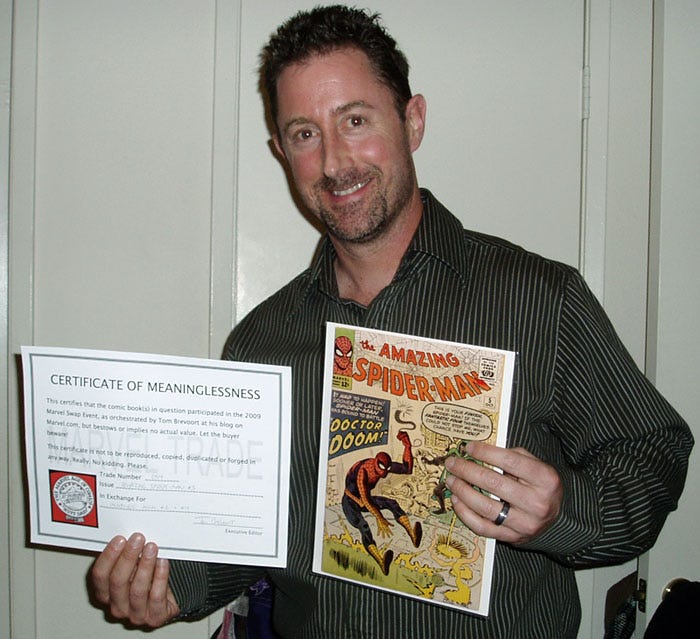
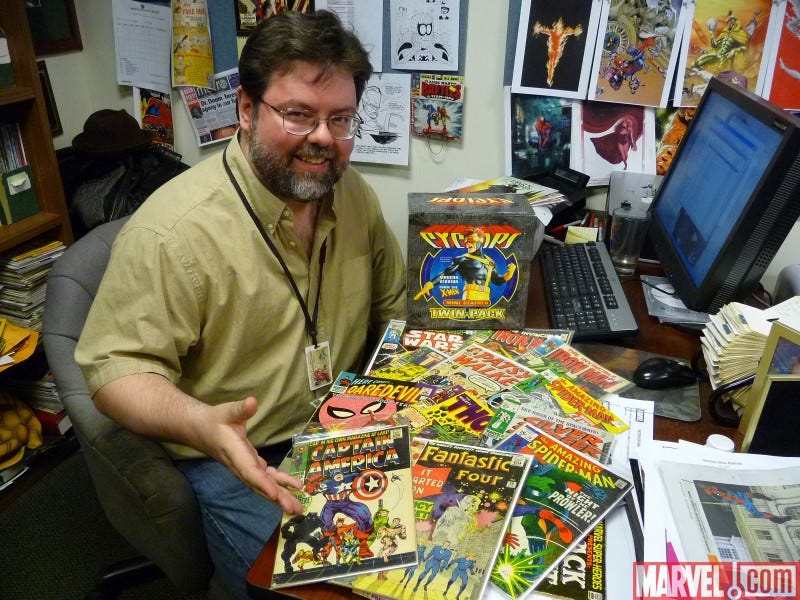
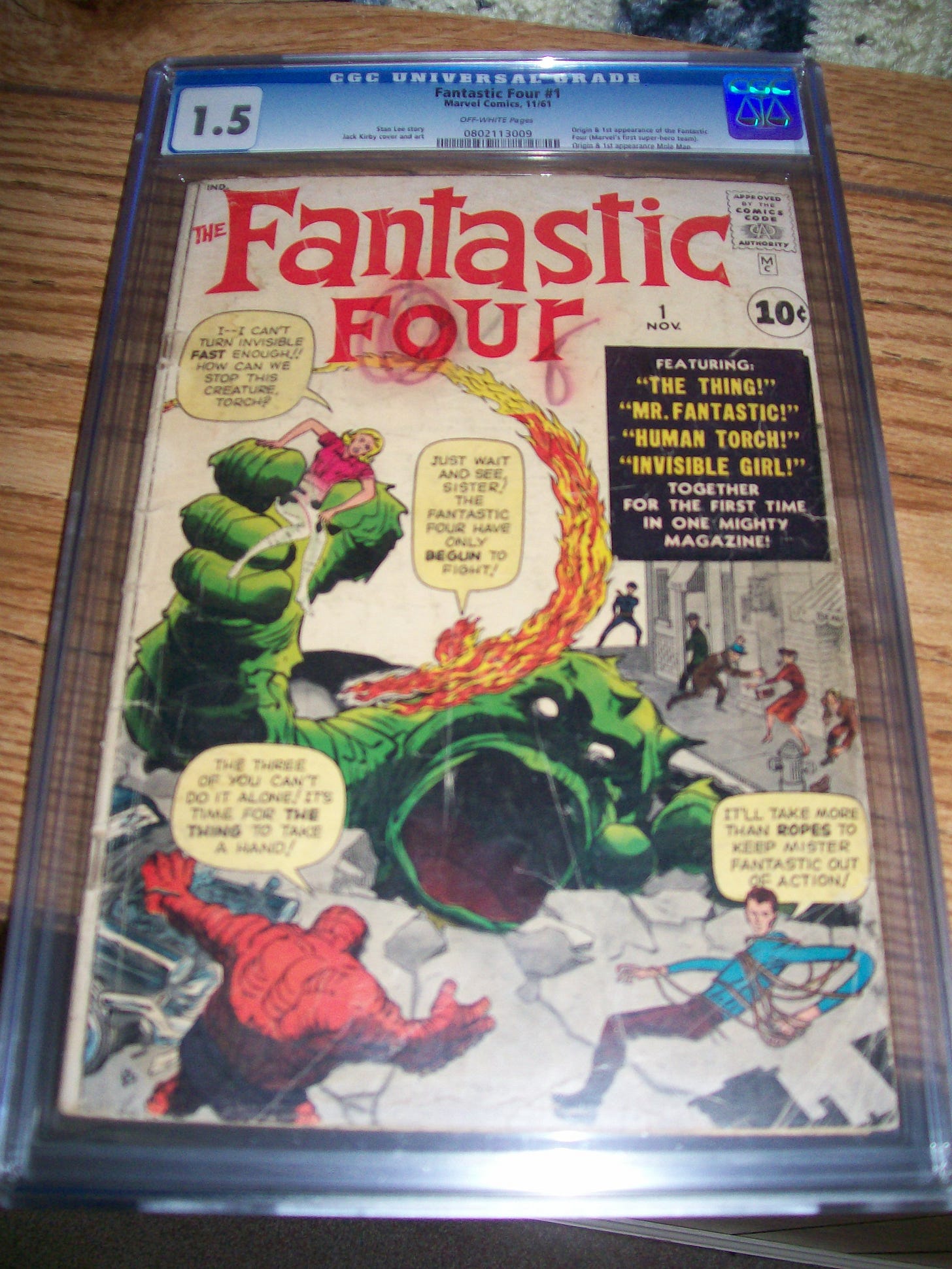
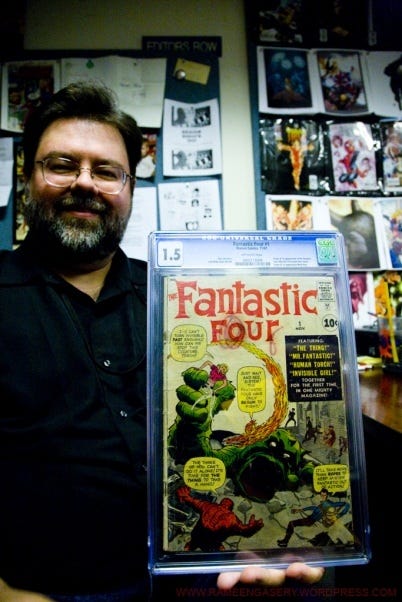
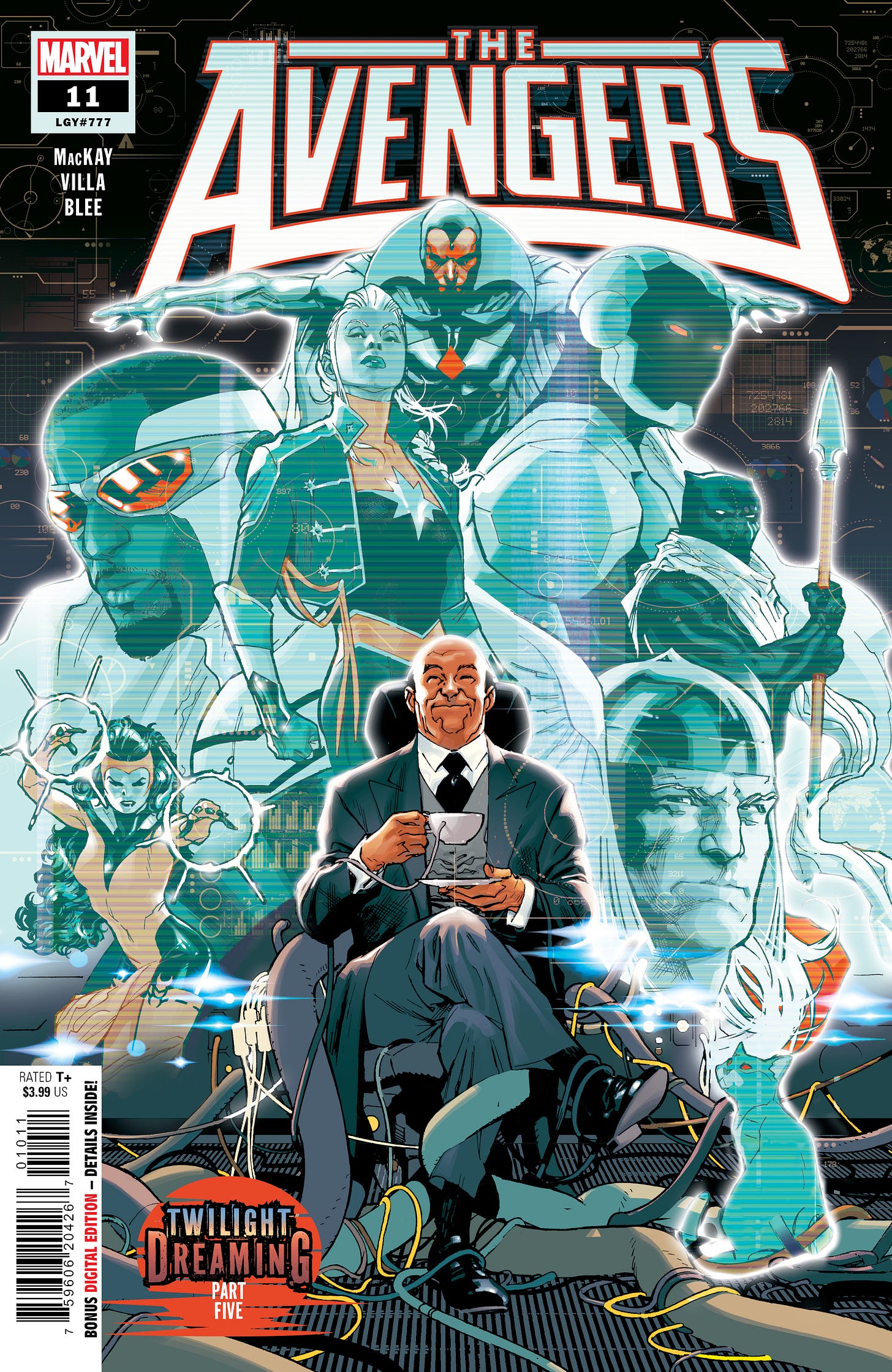


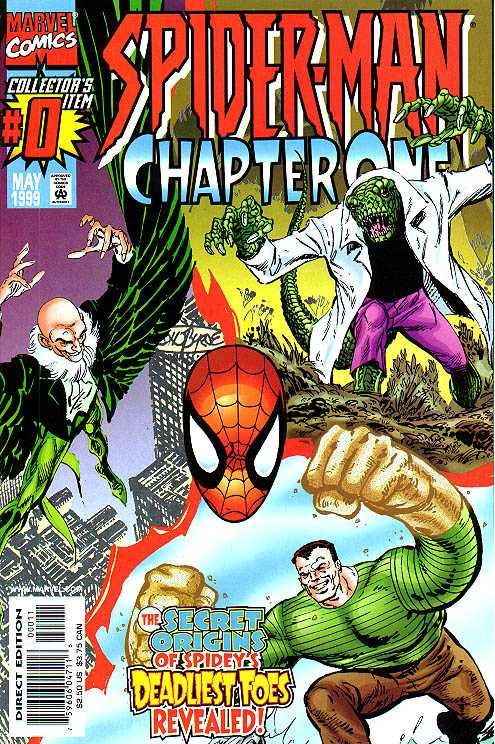
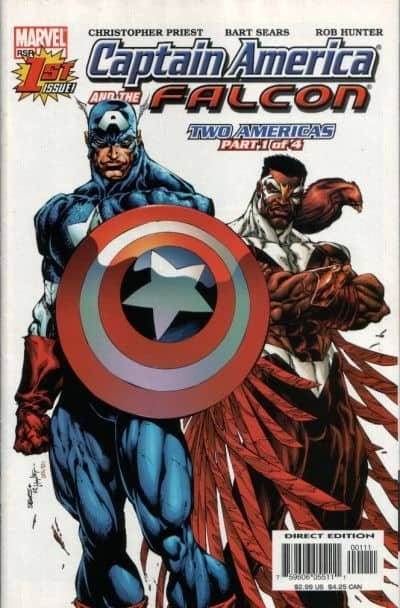
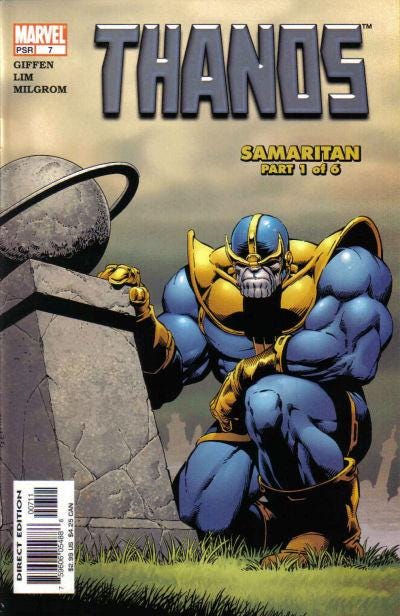
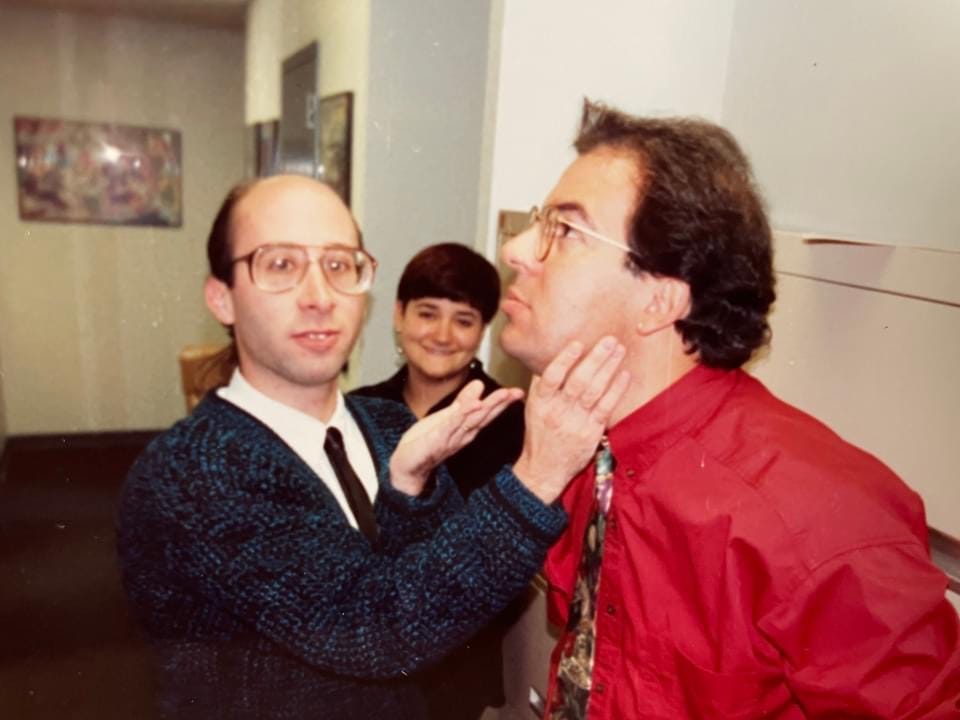
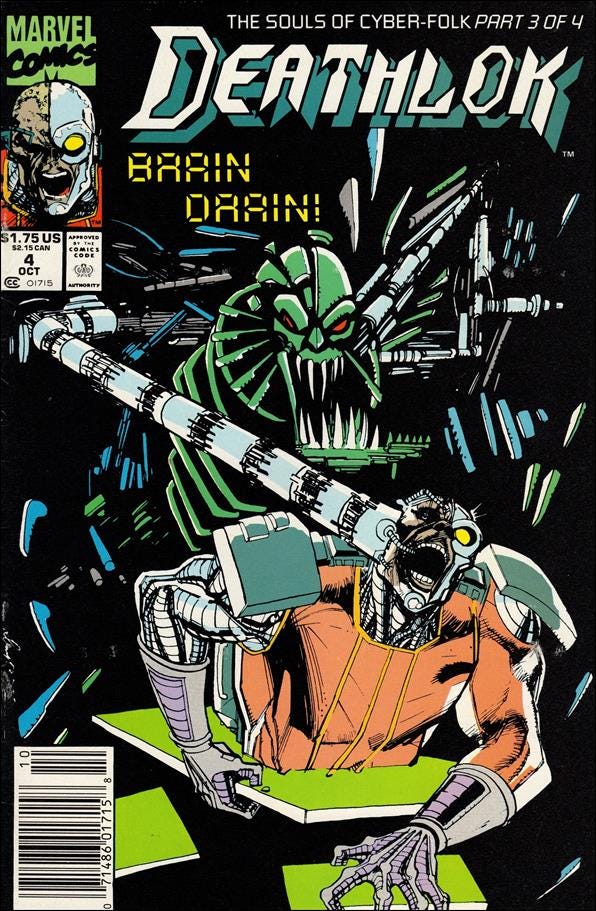
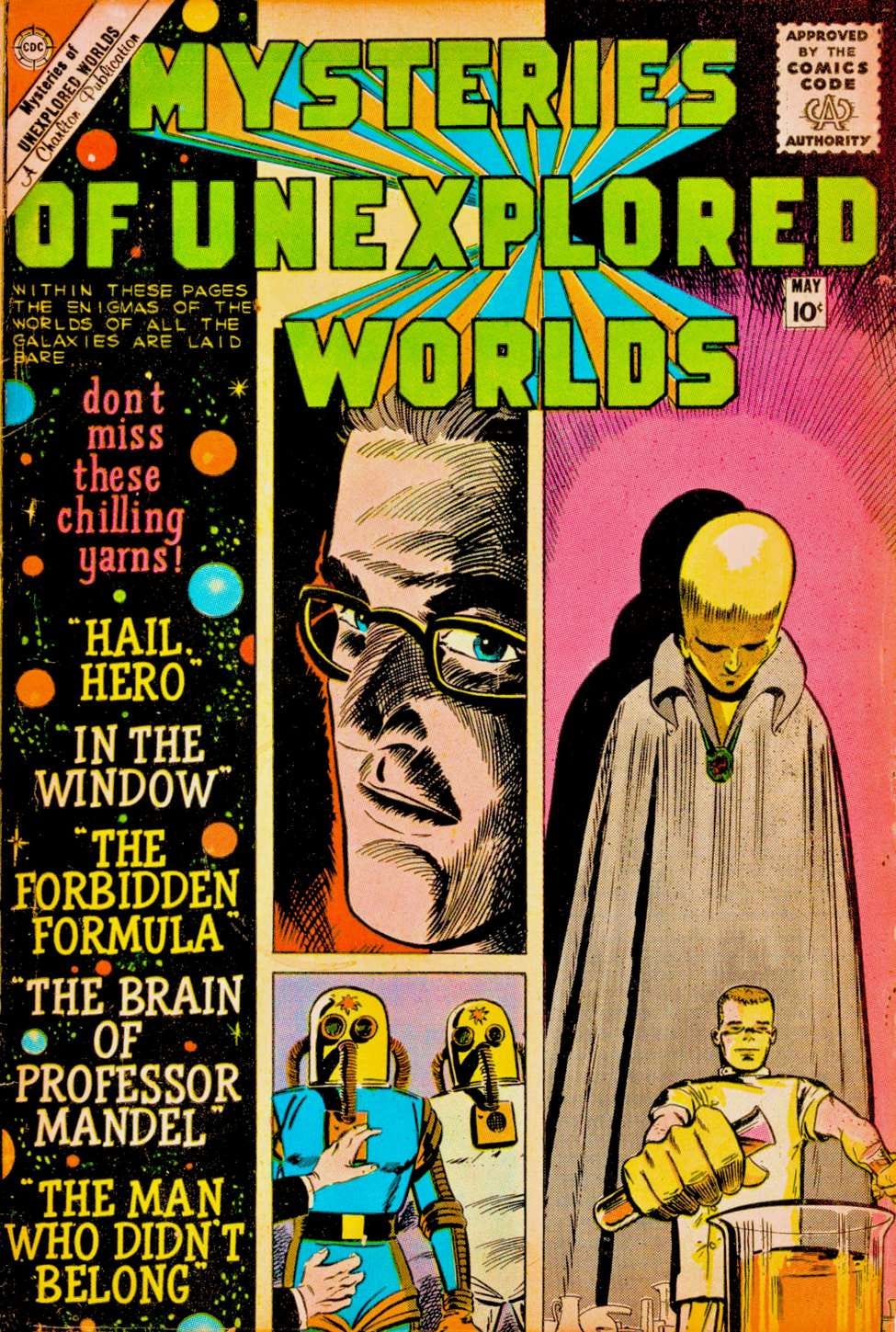
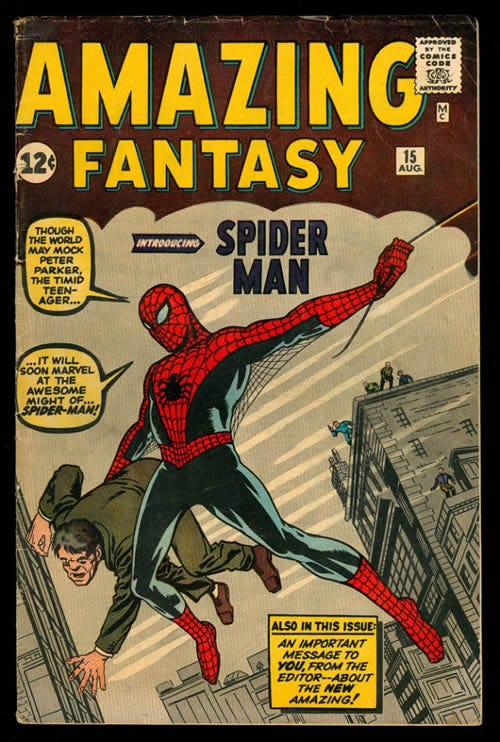
Yikes. Well we are not in bad faith, we tell the truth. You admit it's about the left wing political agenda first in this very blog, and that's what "woke" is if you were unclear of the definition. The thing is why do you call fans "cretins" who just don't want that agenda in their entertainment? Shouldn't you care what the audience wants first in taking care of a property like X-Men?
Tom, really enjoying the newsletter, but also wanted to use this forum to issue a public apology. About a decade ago, you and filmed hours and hours of footage for the Fantastic Four’s 50th anniversary and it was great stuff thanks to your insight and expertise. However, those videos never aired, and it’s one of the biggest regrets of my professional life. If anybody at Marvel still has access to those files, hopefully someday they get discovered. Sorry Tom! And thanks for the content!